Abstract
The herpes simplex virus (HSV) amplicon vector is a versatile plasmid-based gene delivery vehicle with a large transgene capacity (up to 150 kb) and the ability to infect a broad range of cell types. The vector system was originally developed by Frenkel and her colleagues in 1980. Ever since, a great deal of effort by various investigators has been directed at minimizing the toxicity associated with the inevitable contamination by helper virus. In 1996, Fraefel and his colleagues successfully devised a cosmid-based packaging system that was free of contamination by helper virus (socalled helper virus-free packaging), which utilized as helper a set of 5 overlapping cosmid clones that covered the entire HSV genome, which lacked the DNA packaging/cleavage signals. With the helper virus-free system, broader applications of the vector became possible. Cloning of the entire HSV genome in bacteria artificial chromosome (BAC) plasmids enabled stable maintenance and propagation of the helper HSV genome in bacteria. It also allowed for the development of BAC-based helper virus-free packaging systems. In this article, we review various versions of DNA-based methods to prepare HSV amplicon vectors free of helper virus contamination. We also examine recent advances in vector design, including methods of vector construction, hybrid amplicon vectors, and the infectious BAC system. Future directions in improving packaging systems and vector designs are discussed.
Keywords: Herpes simplex virus, bacterial artificial chromosome (BAC), HSV amplicon, packaging system, hybrid amplicon, infectious bacterial artificial chromosome (iBAC)
Current Gene Therapy
Title: DNA-Based Methods to Prepare Helper Virus-Free Herpes Amplicon Vectors and Versatile Design of Amplicon Vector Plasmids
Volume: 6 Issue: 3
Author(s): Kazue Kasai and Yoshinaga Saeki
Affiliation:
Keywords: Herpes simplex virus, bacterial artificial chromosome (BAC), HSV amplicon, packaging system, hybrid amplicon, infectious bacterial artificial chromosome (iBAC)
Abstract: The herpes simplex virus (HSV) amplicon vector is a versatile plasmid-based gene delivery vehicle with a large transgene capacity (up to 150 kb) and the ability to infect a broad range of cell types. The vector system was originally developed by Frenkel and her colleagues in 1980. Ever since, a great deal of effort by various investigators has been directed at minimizing the toxicity associated with the inevitable contamination by helper virus. In 1996, Fraefel and his colleagues successfully devised a cosmid-based packaging system that was free of contamination by helper virus (socalled helper virus-free packaging), which utilized as helper a set of 5 overlapping cosmid clones that covered the entire HSV genome, which lacked the DNA packaging/cleavage signals. With the helper virus-free system, broader applications of the vector became possible. Cloning of the entire HSV genome in bacteria artificial chromosome (BAC) plasmids enabled stable maintenance and propagation of the helper HSV genome in bacteria. It also allowed for the development of BAC-based helper virus-free packaging systems. In this article, we review various versions of DNA-based methods to prepare HSV amplicon vectors free of helper virus contamination. We also examine recent advances in vector design, including methods of vector construction, hybrid amplicon vectors, and the infectious BAC system. Future directions in improving packaging systems and vector designs are discussed.
Export Options
About this article
Cite this article as:
Kasai Kazue and Saeki Yoshinaga, DNA-Based Methods to Prepare Helper Virus-Free Herpes Amplicon Vectors and Versatile Design of Amplicon Vector Plasmids, Current Gene Therapy 2006; 6 (3) . https://dx.doi.org/10.2174/156652306777592081
| DOI https://dx.doi.org/10.2174/156652306777592081 |
Print ISSN 1566-5232 |
| Publisher Name Bentham Science Publisher |
Online ISSN 1875-5631 |
Call for Papers in Thematic Issues
Programmed Cell Death Genes in Oncology: Pioneering Therapeutic and Diagnostic Frontiers (BMS-CGT-2024-HT-45)
Programmed Cell Death (PCD) is recognized as a pivotal biological mechanism with far-reaching effects in the realm of cancer therapy. This complex process encompasses a variety of cell death modalities, including apoptosis, autophagic cell death, pyroptosis, and ferroptosis, each of which contributes to the intricate landscape of cancer development and ...read more
 2
2
- Author Guidelines
- Bentham Author Support Services (BASS)
- Graphical Abstracts
- Fabricating and Stating False Information
- Research Misconduct
- Post Publication Discussions and Corrections
- Publishing Ethics and Rectitude
- Increase Visibility of Your Article
- Archiving Policies
- Peer Review Workflow
- Order Your Article Before Print
- Promote Your Article
- Manuscript Transfer Facility
- Editorial Policies
- Allegations from Whistleblowers
- Announcements
Related Articles
-
The Delivery of Biologically Active (Therapeutic) Peptides and Proteins into Cells
Current Medicinal Chemistry Nanoparticle-Based Tumor Theranostics with Molecular Imaging
Current Pharmaceutical Biotechnology Isoprenylation of Intracellular Proteins as a New Target for the Therapy of Human Neoplasms: Preclinical and Clinical Implications
Current Drug Targets Effects of Natural Products on Mcl-1 Expression and Function
Current Medicinal Chemistry Nanosized Drug Delivery Systems for Direct Nose to Brain Targeting: A Review
Recent Patents on Drug Delivery & Formulation Heat Shock Proteins in Cancer: Signaling Pathways, Tumor Markers and Molecular Targets in Liver Malignancy
Protein & Peptide Letters Targeted Angiogenesis Therapy in Head and Neck Squamous Cell Carcinomas
Current Angiogenesis (Discontinued) Biodistribution and Safety Assessment of Bladder Cancer Specific Recombinant Oncolytic Adenovirus in Subcutaneous Xenografts Tumor Model in Nude Mice
Current Gene Therapy Oxidative Stress, Redox Signaling and Cancer Chemoresistance: Putting Together the Pieces of the Puzzle
Current Medicinal Chemistry Convection-Enhanced Delivery for Diffuse Intrinsic Pontine Glioma Treatment
Current Neuropharmacology Editorial (Thematic Issue: New Trends in Pharmaceutical Nanotechnology)
Current Pharmaceutical Design Edema-mass Ratio Based On Magnetic Resonance Imaging As A Preoperative Diagnostic Factor For Posterior Fossa Metastasis
Current Medical Imaging Recent Developments in Targeted Therapies of the RAF-MEK and PI3KAKT Pathways in Cancer Treatment
Current Cancer Therapy Reviews In Vivo Optical Imaging in Gene & Cell Therapy
Current Gene Therapy Editorial
Current Radiopharmaceuticals The Role of Mammalian Target of Rapamycin (mTOR) Inhibitors in the Treatment of Solid Tumors
Current Cancer Therapy Reviews NOTCH Signaling as a Novel Cancer Therapeutic Target
Current Cancer Drug Targets Induction of Tumour Cell Senescence: A New Strategy in Anticancer Treatment
Medicinal Chemistry Reviews - Online (Discontinued) Activatable Molecular Probes for Cancer Imaging
Current Topics in Medicinal Chemistry Targeting Ion Channels for New Strategies in Cancer Diagnosis and Therapy
Current Clinical Pharmacology












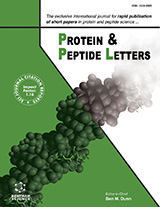
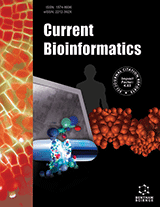
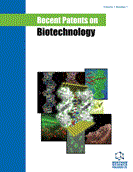
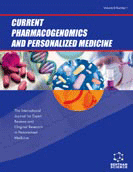
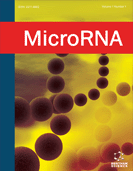
.jpeg)








